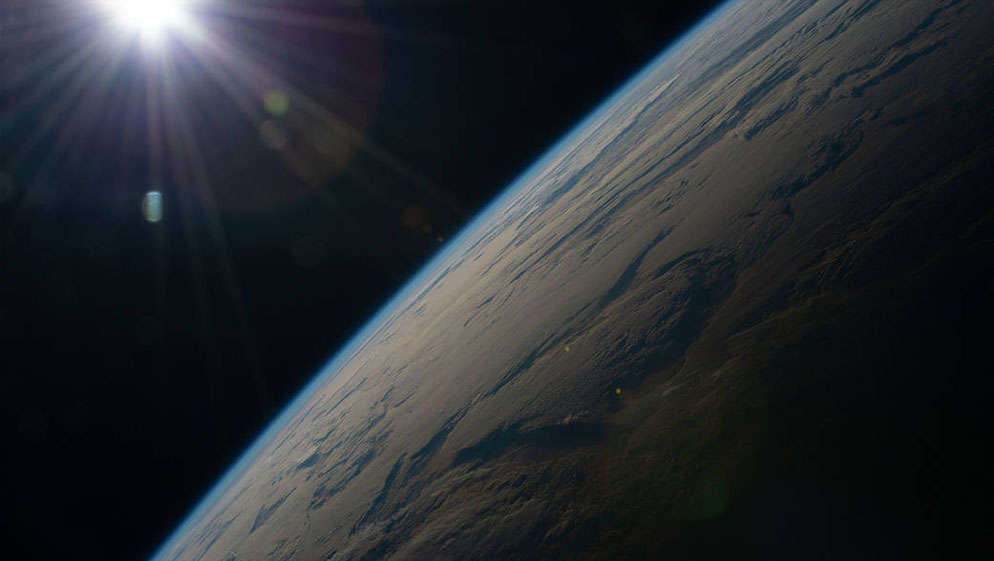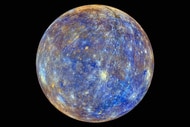Create a free profile to get unlimited access to exclusive videos, sweepstakes, and more!
We are made of stardust that comes from farther away than we could ever imagine

If the stuff of stars runs through our veins, then where did all our stardust come from?
This isn’t really an existential question. We are carbon-based life-forms. So is everything else that lives on Earth, and that carbon came from somewhere. Now, two new studies by the same team of scientists have found that we are probably made of stuff from real far out. Most carbon on Earth probably came from the interstellar medium, or material drifting between the stars in our galaxy, arriving around the time the solar system was still in its embryonic phase.
That stardust survived a grueling journey all the way to Earth, and through processes that were anything but magic, Earth got just enough for life to thrive.
“When presolar stars died, they expelled gases,” Jackie Li, who led the first study (published in Science Advances) and coauthored the second (in PNAS), told SYFY WIRE. “Carbon-rich stardust formed within the outflowing and cooling gases. These grains would float around in interstellar space, and some got incorporated into the Solar Nebula.”
It was not so easy for carbon that was scattered in space to make it over here. Before anything, it morphed into solid form within a million years after the Sun formed. That carbon somehow needed to avoid vaporizing as it traversed the void in particles of stardust, because it does not condense so easily. Stardust gives off carbon monoxide when it evaporates and cannot revert back to a solid in temperatures above -400 degrees Fahrenheit. What is now our planet was an inhospitable 176 degrees Fahrenheit for its first few hundred million years, so there is no way it condensed within the protoplanetary disc and lived to tell about it.
What scientists had hypothesized before was that carbon was already here in the beginning. It was supposedly hiding in gas molecules that swirled around in nebular gas and dust, which made up the protoplanetary disc from which the solar system was born. Later, when the gases from the disc had cooled down, they were thought to have condensed enough for carbon and other substances to solidify and accrete into the orb of gas and dust that became proto-Earth. The carbon would have been vaporized if that actually happened.
This is why it had to have come from somewhere else deeper in space (and potentially from lightning releasing it from terrestrial rocks), where it could survive long enough to make it to Earth as a solid and supply our planet with its lifeblood.
“Some inherited carbon-rich solids may have been sequestered inside larger bodies and therefore avoided vaporization, while others may have remained in the regions far away from the Sun,” Li said. “Carbon-rich stardust could be readily preserved once the Sun was almost fully formed and the proto-planetary disk cooled down.”
Whatever solids contained carbon and were closer to our emerging solar system needed to stay far enough from the Sun to be outside the “soot line.” This is kind of like the “snow line,” beyond which it is cold enough for water vapor to solidify into ice, except water can evaporate and condense at the same temperature, while the hydrocarbons in soot need scorching temperatures to evaporate. These temperatures are much too high for hydrocarbons to re-condense, so if carbon in the nascent solar system went beyond the point of no return, there was no turning back.
Figuring out how much carbon our planet can possibly hold could also tell us how Earth got its carbon. Li and her team were able to get an estimate by comparing the sound velocity of Earth’s core — how far sound energy can be transmitted through it in a given amount of time — to the speed at which a seismic wave zooms through the core. Seismic waves travel faster through the crust than they do through the much denser core, which is predominantly liquid iron. The only way to make those speeds equal would be to hypothetically keep adding carbon to the core until they matched up.
“This speed comparison places constraints on the extent and timing of carbon loss in its building blocks,” said Li. “Our calculations show that the Earth is a carbon-poor planet, which means most of its building blocks lost the inherited carbon. The loss must have occurred very early, when the disk was sufficiently hot for presolar carbon solids to evaporate.”
Our planet would end up with a killer greenhouse effect if there was too much carbon in the atmosphere. Earth would turn into Venus. Li believes that investigating how carbon escaped Earth might tell us how and where to find other planets where life could spawn.
“Understanding the carbon loss process can help us identify the most promising star or planet formation pathways for yielding a habitable planet,” she said.
Tell that to another carbon-based life-form.















